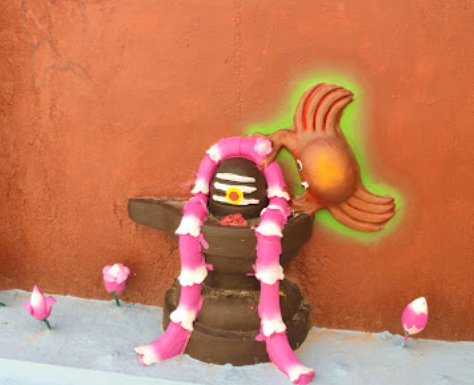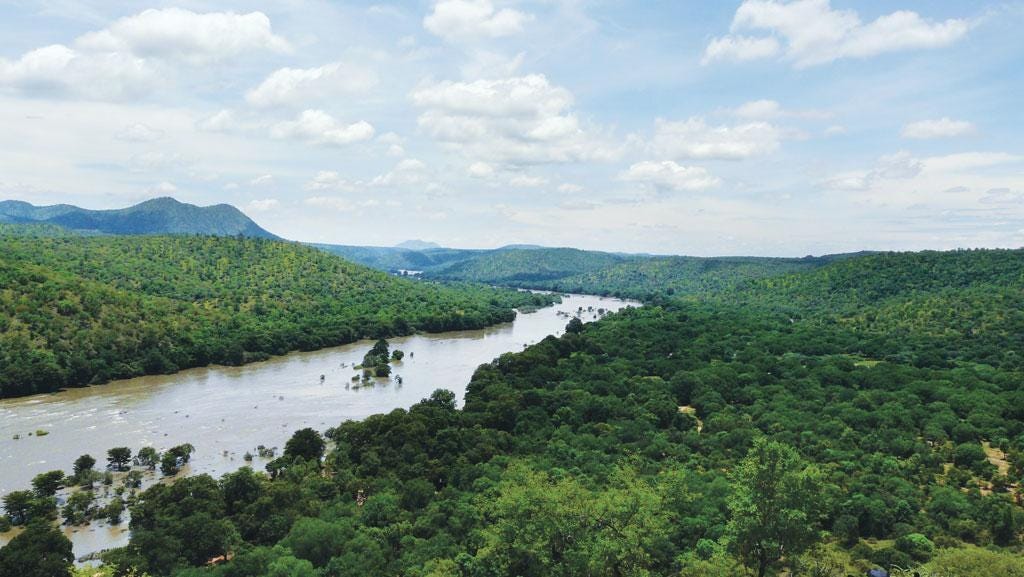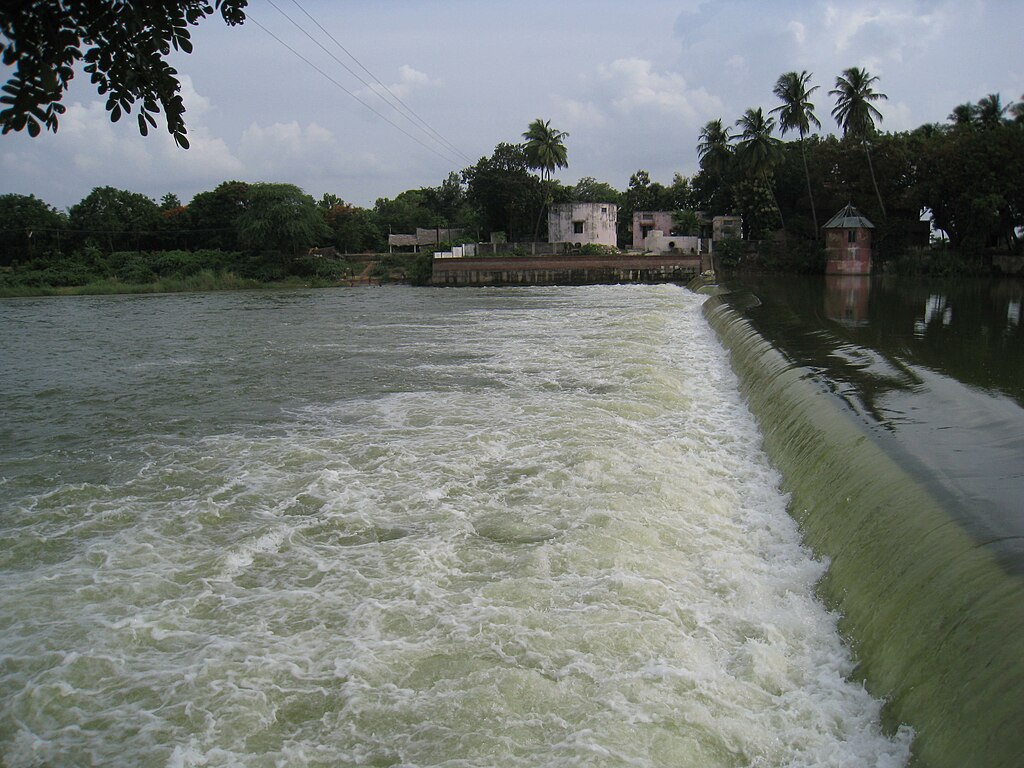- This is one of the 276 Devara Paadal Petra Shiva Sthalams and 42nd Shiva Sthalam on the northern bank of the river Cauvery in Chozha Nadu (Vadakarai).
- Lord Shiva in this temple is a Swayambumurthi (self-manifested).
- This is a famous “Parihara Sthalam” for those who were born in Kadaka Rasi.
- In earlier days people use to call this village as Thirundudevankudi but in recent days it is better known as Thiruvisanallur.
- In colloquial terms people refer to this village as Nandu Koil or Nandan Koil.
- Sri Karkadeswarar Swamy Temple is located in a distant village Thirundhudevankudi which is close to Thiruvidaimarudhur and Kumbakonam.
- The Linga here is a Swayambumurthy, which means it is not installed by anyone, but existed naturally.
- While it is for all the Kataga natives, people born under Ayilya star should visit this temple for sure.
- It is said that people born under this star are short tempered, owing to which they might face lots of problems in their lives .
- Also, these people have different characteristics. They would be very active at times, and very lazy at times.
- They love jewellery and luxury.
- They can also be called spendthrifts.
- Here, Lord Vinayaka is called Karkadaga Vinayaka.
- Placement of Kethu planet decides a lot of things for these people.
- Lord Vinayaka is the Lord of this planet.
- So worshipping him here can help Kataga or Cancer natives a lot to cross the obstacles.
PURANIC SIGNIFICANCE 1:
- Sage Durvasar comes up often in my write ups.
- Once he was returning after performing Shiva Pooja.
- At that time, a Gandharva made fun of him and his way of walking, calling it a Crab Walk ( walking like a crab with a peculiar gait ).
- He also mimicked the walk of the sage. The irritated Rishi cursed him to become a crab.
- The Gandharva realised his folly and sought forgiveness and the way of redemption.
- Durvasar advised him to pray in this temple.
- The latter came in the form of a crab and did intense penance.
- Pleased with his prayers, Shiva gave him redemption and allowed him to merge with Himself.
- Hence even today, we could see a hole on the top of the Lingam, made by the crab.
- This could be seen if the priest lowers the Rudraksha Mala on Lord’s head.
- Since the Sanskrit name for crab is Karkadam/Kadakam ( Nandu in Tamil and the Zodiac sign is Cancer), the Lord came to be called Karkadeswarar.
PURANIC SIGNIFICANCE 2:
- The Ghandharva was plucking one flower every day from the temple pond, crawling through a hole created on top of the Lingam and offering the flower to the Lord’s head.
- At that time, Indra was advised by his Guru to worship this Lord with 1000 flowers every day to get back his lost power.
- However, every time when he was collecting the flowers, only 999 flowers used to be present as the 1000th flower was removed by the crab.
- Indra got angry when he realised that one flower is plucked by the crab every day.
- He tried to kill the crab with his sword.
- The Lord appeared in front of the Ghandharva and saved him.
- Since the sword of Indra made a cut in the lingam, one could see it on the Lingam even today.
- Indra repented for his act.
- The Lord explained the story of Gandharva and offered His blessings to both.
- Since Indra, the Deva, reformed himself in this place, it came to be called Thirundu ( reformed) Devan (Indra )Kudi.
- A carving is seen in one of the pillars in the main mandapam depicting the Lingam with the crab on His head and Indra by His side.
PURANIC SIGNIFICANCE 3:
- This is an old temple.
- Over a period of time, due to neglect, the temple was buried in sand.
- At that time, the ruling Chozha king was afflicted with Arthritis.
- Despite the treatment by the physicians, he did not get any relief. At that time, an elderly couple came to his palace.
- When the king explained his problem, the couple offered him Vibhuti and asked him to take it along with water and gave him a Rudraksha Mala to wear around his neck.
- When the king followed their advice, he was miraculously cured.
- The grateful king wanted them to stay with him in the palace.
- On their refusal, the King offered them gold which was declined.
- As the king went on requesting them to accept some gift, they asked him to accompany them to a place where the Lingam was buried and asked him to build a temple there.
- After giving him the directions, They merged into the Lingam.
- Then only the king realised that the couple were none other than Shiva and Parvathi.
- He constructed a beautiful temple on this spot.
- The act of healing by the Lord is described in Sambandar’s hymn.
- Hence people with chronic diseases come and pray here.
- The Lord is a Swayambumurthy.
- As mentioned earlier, the marks, caused by the crab as well as the one said to have been due to Indra’s sword, are visible.
- This is one of the rare Shiva temples with two Ambals- Apoorva Nayaki and Arumarundu Nayaki- in adjoining shrines.
- As per the sthala puranams, when the Chozha King re-built the buried temple, he could not locate the idol of the Ambal.
- Hence he got a new idol sculpted and named Her Arumarundu Nayaki as She gave him the rare medicine (Arumarundu).
- However, after some time, the original Ambal idol was located and She was installed as Apoorva Nayaki in the adjoining shrine.
PURANIC SIGNIFICANCE 4:
- There is another legend connecting Dhanvantri ( the doctor to the Devas and according to many scholars, one of the forms of Mahavishnu) to this temple. Dhanvantri was not getting certain rare herbs in Devaloka and came to earth in search of them.
- At that time, he met Agasthya and the Kuru Muni advised him to search for the herbs in Aushadavanam on the northern banks of Kaveri.
- Dhanvantri came to this place and found a Shiva Lingam.
- After praying to the Lord, he started looking for the herbs.
- After some time, he met an old man who introduced himself as Mahavaidyanathan. He told Dhanvantri that it was he who planted all these plants and creepers which are to be used as medicines.
- When Dhanvantri could not identify certain herbs, the old man helped him in identifying them.
- He permitted Dhanvantri to take any of these herbs and use them for curing those suffering from diseases.
- When they were coming near the Shiva Lingam, the old man disappeared.
- Then only Dhanvantri realised that the old man was none other than Lord Shiva.
- He stayed behind for some more time, offering his prayers and after completing his collection, went back to Devaloka.
- This legend may be read along with the story of the Chozha King and then we can understand as to why the Mother here is called Arumarundu Nayaki. ( Arumarundu in Tamil means rare medicine).
TEMPLE ADMINISTRATION:
This temple is under the administrative control of the Hindu Religious and Charitable Endowments Department of Government of Tamil Nadu (HR&CE).
The last consecration ceremony took place on 06.07.2003.
People who worshipped here :

- Crab
- Ambica
- Indran
- Chola King.
b788ef.png)

